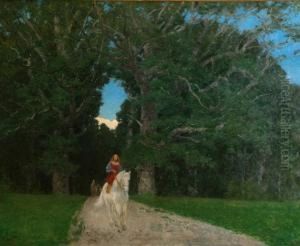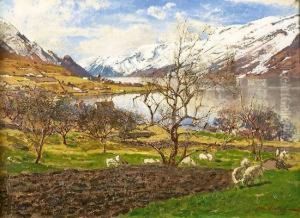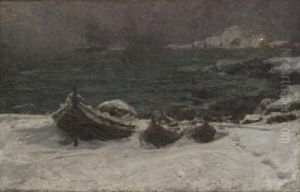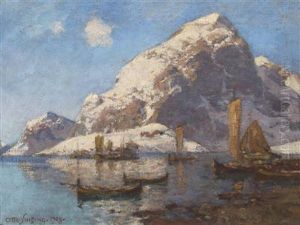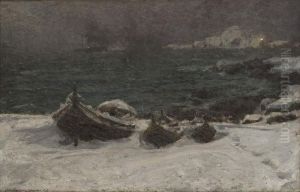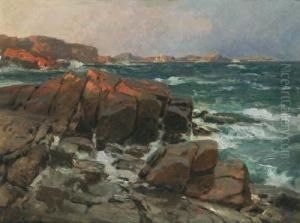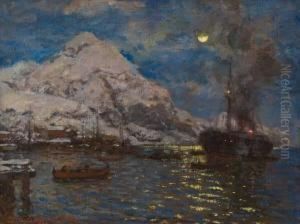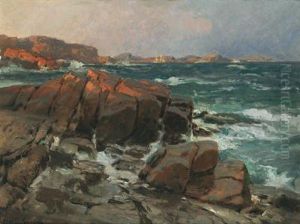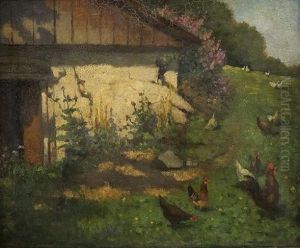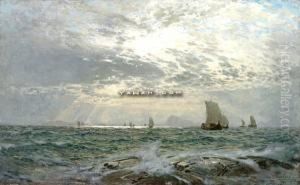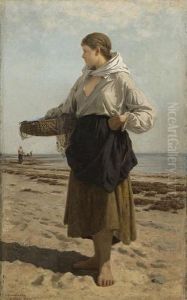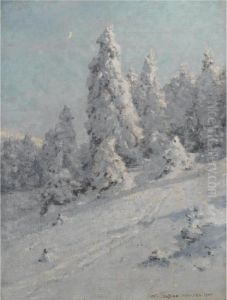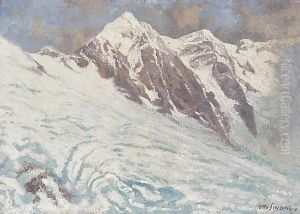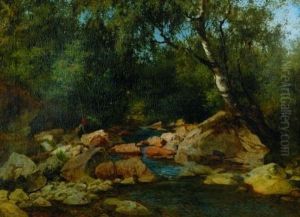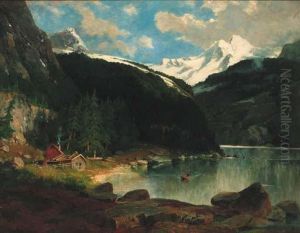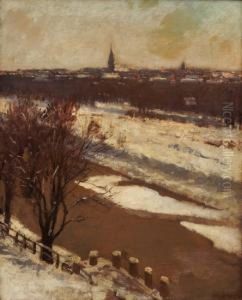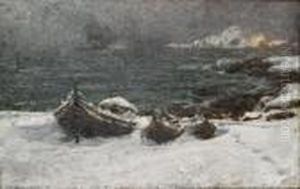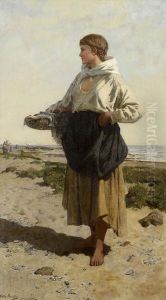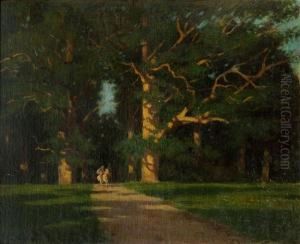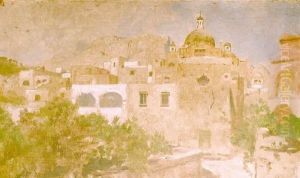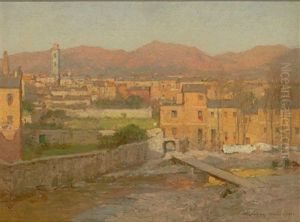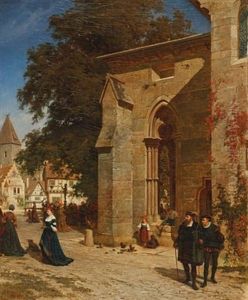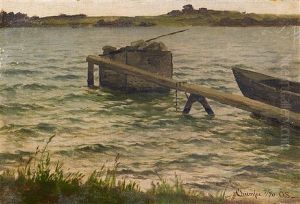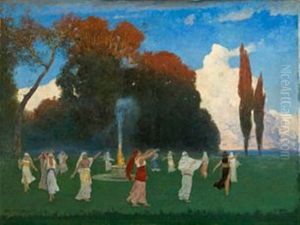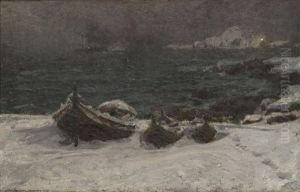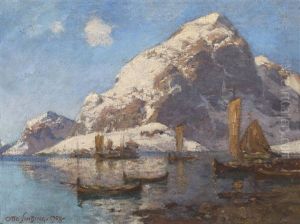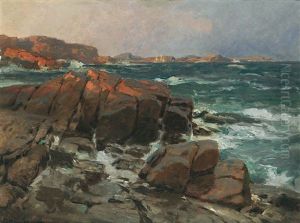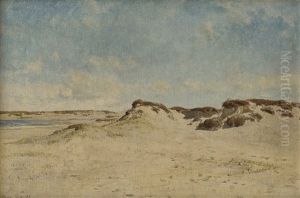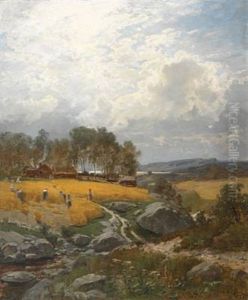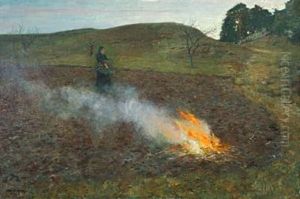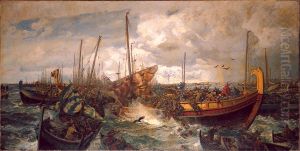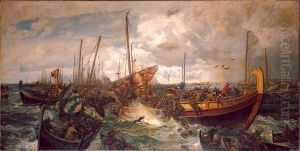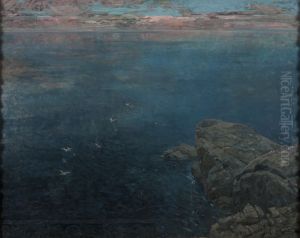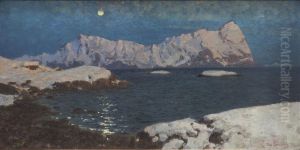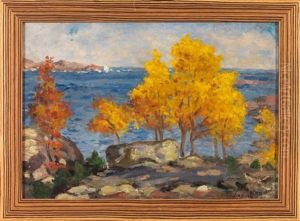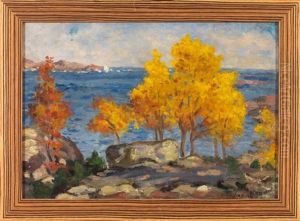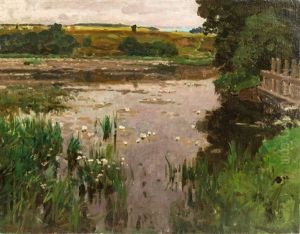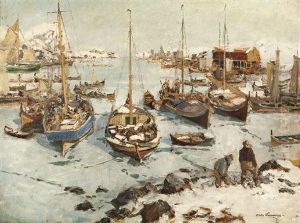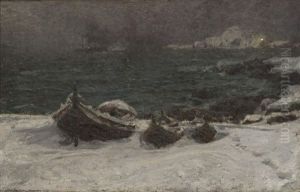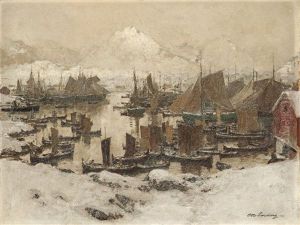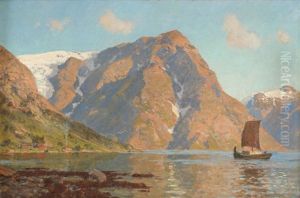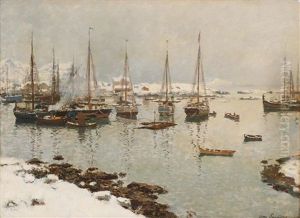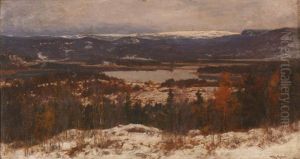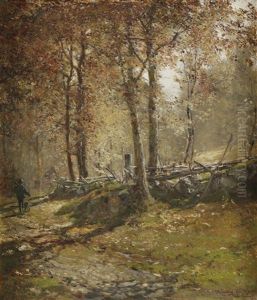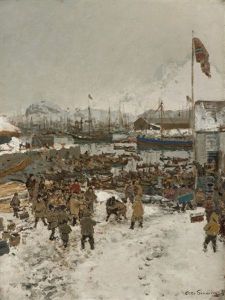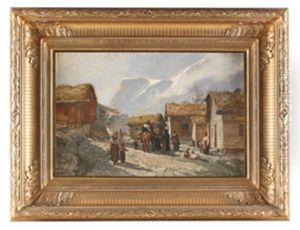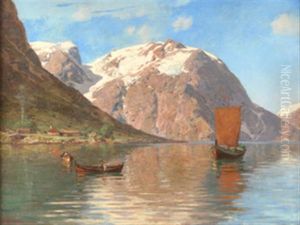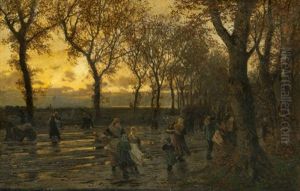Otto Ludvig Sinding Paintings
Otto Ludvig Sinding was a notable Norwegian painter, illustrator, and sculptor born on December 21, 1842, in Kongsberg, Norway. He was part of the Sinding family, which included his brothers Stephan Sinding, a well-known sculptor, and Christian Sinding, a famous composer. Otto Sinding initially pursued a career in law before deciding to dedicate himself to art, a decision that led him to study painting.
He began his art education in Christiania (now Oslo) and later continued his studies in Karlsruhe and Munich, where he was influenced by the prevailing artistic trends of the time, including naturalism and later impressionism. Sinding's early work focused on genre scenes, landscapes, and literary and historical paintings. His style was characterized by a strong sense of realism and a penchant for dramatic compositions and lighting, which was common among many Scandinavian artists of the period.
Throughout his career, Sinding traveled and worked in various locations. He spent significant time in Germany, where he was influenced by the Munich School's approach to painting. Later, he also lived and worked in Paris, which was then the epicenter of the art world, and he absorbed elements of French impressionism into his work.
Sinding's artwork received recognition in his time, and he was commissioned for various prestigious projects, including illustrations for books and periodicals. His works were exhibited widely, including at the Salon in Paris and in exhibitions in Munich and Vienna, where he gained a considerable reputation.
Otto Sinding's contribution to Norwegian art is also significant in his role as an educator. He taught many young artists who would go on to contribute to the cultural landscape of Norway. His influence extended beyond his own works as he played a part in shaping the artistic direction of the generation that followed.
Otto Ludvig Sinding died on November 23, 1909, in Munich, Germany. His legacy continues to be celebrated in Norway and beyond, with his works held in various art collections and museums. His dedication to art and his ability to blend different European artistic influences into his work have marked him as an important figure in the history of Norwegian art.
